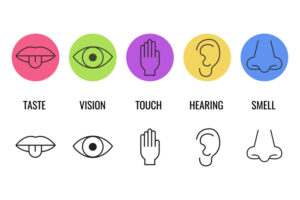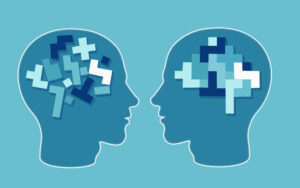What is Interoception?
The body has a way of communicating to the brain. When your stomach is empty it may indicate a feeling that you are hungry or when it has not had enough sleep it may indicate a feeling of tiredness. Pain is a major signal that something is wrong.
But people are generally more familiar with those senses that are felt from outside the body that then travels up the spinal cord and are processed by the brain. So when you touch something, that message travels through the spinal cord for the brain to process. We perceive the world through our five senses—our eyes, ears, skin, nose, and mouth are all receptors. Everything that comes into the brain enters through one of these doors. Because most of us take the world in through our senses effortlessly, we don’t give much thought or attention to how we do this (Davies, 2014).
But what about our internal physical sensations some of which are described in the first paragraph of this article. Sweeton (2021) describes a part of the brain known as the insula which can be conceptualised as the mind/body connection centre of the brain. It is a brain structure that Sweeton describes as a centre where external sensory information, internal physical sensations and some aspects of cognitive control are integrated. Another term for these internal physical sensations is interoception.
When people describe anxiety they often describe feeling worried, agitated or unsettled but people can also describe anxiety as a type of physical sensation. So you might ask yourself. “How do I know when I’m anxious?”. The answer may be that I feel a sense of heaviness in my head or that my stomach feels unsettled or that my arms or neck feels tense. This feeling within the body can also help to overcome this feeling.
Think about it. If I can recognise that anxiety is manifested by a feeling of tension in my back or another part of my body, then by concentrating my efforts on relaxing that part of my body through exercise, stretching, lying on the floor or yoga, then maybe my anxiety will respond accordingly or at least some of the symptoms lessened.
So how does this work? Most of the major organs in the body have sensors that pick up messages and send those messages, through the spinal cord to the brain. A good analogy might be the way a modern car works. Components of the engine have built in sensors that monitor such things as the braking system, oil and temperature and a range of other functions. Those sensors monitor performance and if there is something wrong (temperature too high) then a signal is sent via the electrical system to the dashboard indicating an amber or red warning lights). An amber warning light on the dash may indicate a possible problem area that alerts the drive to have it checked.
A red warning light might indicate to the driver that they should stop immediately and attend to the issue at the risk of a major breakdown. In my years of experience as a Psychologist I have noted that some of my clients fail to recognise some of these signals and, even though a red light is flashing on the dashboard, fail to stop the car and end up with some catastrophic results. So your body has a way of communicating and by taking note of what it is saying, we can take appropriate action.
If you are wanting help to identify these signals and explore the background to them, don’t hesitate to Book Online with Peter Barta or give Vision Psychology a call on 07 3088 5422.
References
Davies, L. The Five Senses and the Nature of Perception. Psychology Today. November, 2014.
Sweeton, J. Eight Key Brain Areas of Mental Health and Illness. W.W. Norton and Company. NEW YORK 2021.


